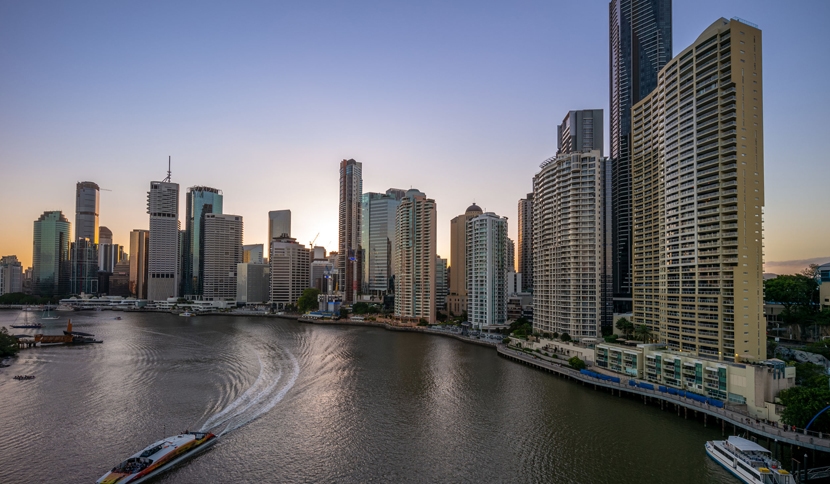Living in Brisbane vs. Perth is a choice that sparks much debate among Australians and newcomers alike. Both cities offer distinctive charms, economic opportunities, and lifestyles, but they also differ significantly in climate, culture, cost of living, and urban development. Whether you are relocating for work, family, or simply a lifestyle upgrade, understanding these contrasts is vital to making an informed decision. Brisbane, the capital of Queensland, is located on the east coast and is known for its subtropical climate, while Perth, the capital of Western Australia, lies on the west coast and features a Mediterranean climate. For those considering where to settle, comparing the practical and emotional benefits of living in each city is key.
Brisbane’s Visit Brisbane website showcases the city’s vibrant cultural scene, with over 50 major festivals annually and a rapidly growing culinary reputation. In contrast, Destination Perth highlights Perth’s stunning beaches, Swan River views, and proximity to world-renowned wine regions. Brisbane’s lush green parks, like the popular South Bank Parklands, create a laid-back, outdoor-focused lifestyle that rivals Perth’s expansive Kings Park. However, Perth residents enjoy more immediate access to oceanfront relaxation without the long drives required from Brisbane.
On the financial side, CoreLogic shows that median house prices in Perth are significantly lower than those in Brisbane—AUD $645,000 compared to Brisbane’s AUD $805,000 as of March 2025. This affordability is complemented by lower utility bills and grocery prices, according to Numbeo. The employment landscape is also worth noting: Brisbane thrives on health care and education sectors, while Perth dominates in mining and engineering. These trends are reflected in reports by ABS and WA Government, which track economic performance and job creation.
Culturally, both cities are alive with art, music, and festivals, though their flavors differ. Brisbane’s Fortitude Valley buzzes with nightlife, while Perth’s Northbridge and Fremantle areas blend bohemian spirit with contemporary art. Each city supports a strong multicultural base. According to Multicultural Australia, Brisbane is home to large Pacific Islander and Asian communities, whereas Perth has a more significant UK and South African presence, confirmed by WA Migration Services.
Education and health care also vary. Brisbane’s University of Queensland ranks among the top 50 globally, making the city attractive for students and academics. Perth counters with the University of Western Australia, a world-class institution situated by the Swan River. Both cities offer excellent hospital networks, but Brisbane edges ahead in terms of access to specialist clinics.
Ultimately, Living in Brisbane vs. Perth boils down to individual needs—climate preferences, career ambitions, housing budgets, and lifestyle goals. Whichever you choose, both cities promise sunshine, opportunity, and a welcoming atmosphere for newcomers and locals alike.
Climate, Nature, and Outdoor Lifestyle
Tropical Brisbane vs. Mediterranean Perth
Living in Brisbane vs. Perth means choosing between two distinct climate zones. Brisbane offers a humid subtropical climate, with average summer temperatures around 29°C and high humidity. Perth, on the other hand, has a Mediterranean climate, with hot, dry summers reaching up to 31°C and mild winters. In 2024, Brisbane recorded 120 rainy days, compared to Perth’s 92.
Parks and Green Spaces
Perth boasts Kings Park, one of the world’s largest inner-city parks at 400 hectares, while Brisbane features the 16-hectare South Bank Parklands. Both cities prioritize green living, but Perth’s sprawling landscapes offer more open, bushland-style settings.
Beaches and Coastal Access
Living in Brisbane vs. Perth affects beach accessibility. Perth residents enjoy direct access to Indian Ocean beaches like Cottesloe and Scarborough, ideal for sunset views. Brisbane’s closest ocean beaches, like those on the Sunshine and Gold Coasts, require a one to two-hour drive.
Outdoor Activities and Events
Brisbane hosts over 50 major outdoor events annually, including the Brisbane Festival and Riverfire. Perth also shines with events like Sculpture by the Sea and Perth Festival, held during its sunny summer season. In both cities, walking trails, kayaking, and cycling are popular pastimes.
Air Quality and Environmental Conditions
Perth generally records better air quality, averaging an Air Quality Index (AQI) of 28 in 2023 compared to Brisbane’s 35. Bushfire smoke occasionally affects Brisbane more severely due to prevailing eastern winds. The lifestyle contrast becomes clear when evaluating air clarity and pollution levels in Living in Brisbane vs. Perth.
Cost of Living, Jobs, and Economy
Housing Market Overview
Living in Brisbane vs. Perth presents different housing costs. As of March 2025, Brisbane’s median house price is AUD $805,000, while Perth’s is significantly lower at AUD $645,000. Rent for a two-bedroom apartment in Brisbane averages AUD $560 per week, compared to AUD $500 in Perth.
Employment Opportunities
Brisbane’s economy is powered by sectors like health care, education, and construction, employing 16% of its workforce in healthcare alone. Perth’s job market is dominated by mining, engineering, and technology. In 2024, WA’s mining sector contributed over AUD $230 billion to the national economy.
Transport and Commute Costs
A TransLink monthly pass in Brisbane costs AUD $217, while Perth’s SmartRider system averages AUD $180 monthly. Petrol prices are comparable, with Perth slightly cheaper at AUD $1.89 per litre versus Brisbane’s AUD $1.94. Living in Brisbane vs. Perth includes assessing transportation affordability.
Utility and Grocery Prices
Monthly utility bills in Perth average AUD $280, compared to AUD $310 in Brisbane. Grocery prices are also slightly lower in Perth; a basket of essential items costs around AUD $120, while in Brisbane it exceeds AUD $130.
Wages and Economic Growth
WA recorded a 4.2% GDP growth in 2024, the highest in Australia, largely due to mining exports. Queensland’s GDP growth was 3.1%, supported by infrastructure and tourism. The average full-time salary in Brisbane is AUD $93,000, while in Perth it’s AUD $97,000, influencing the Living in Brisbane vs. Perth lifestyle choices.
Culture, Community, and Daily Life
Demographics and Diversity
Living in Brisbane vs. Perth reveals contrasts in community makeup. Brisbane has a population of 2.6 million, with 32% born overseas. Perth, with 2.1 million residents, is more multicultural by percentage—39% are foreign-born. Perth has larger communities from South Africa and the UK, while Brisbane is popular among Pacific Islanders and Asians.
Cultural Events and Nightlife
Brisbane’s nightlife is vibrant in areas like Fortitude Valley and West End, hosting dozens of music venues and art spaces. Perth’s cultural core includes Northbridge and Fremantle, with a growing nightlife scene. Both cities have over 150 annual public festivals, including multicultural celebrations and food expos.
Safety and Crime Rates
In 2023, Brisbane recorded 74 crimes per 1,000 residents, while Perth had a slightly higher rate of 79. Brisbane is generally safer in the CBD, while Perth’s suburbs are known for lower crime levels. Safety is an important factor when evaluating Living in Brisbane vs. Perth.
Cafés, Restaurants, and Food Culture
Brisbane is known for its riverside dining along Eagle Street Pier and multicultural food in Sunnybank. Perth offers world-class seafood and wine from nearby Swan Valley. Both cities feature over 2,000 registered cafés and eateries, with foodie culture deeply ingrained in daily life.
Sense of Community
Brisbane’s suburban layout fosters strong neighborhood networks, especially in family-friendly areas like The Gap and Carindale. Perth’s beachside suburbs like Cottesloe and Scarborough promote outdoor, coastal living with close-knit community vibes.
Education, Healthcare, and Infrastructure
University and Higher Education
Brisbane hosts three major universities: University of Queensland, QUT, and Griffith University. In 2024, UQ ranked 43rd globally. Perth’s top institutions include the University of Western Australia (ranked 72nd globally), Curtin University, and Murdoch University. Living in Brisbane vs. Perth can depend heavily on academic prestige and access.
Public and Private Schools
Queensland and WA both follow the Australian Curriculum. Brisbane has more private school options—approximately 200, versus Perth’s 160. Brisbane Grammar and Anglican Church Grammar School rank among the top nationwide. Perth’s equivalents include Hale School and St Mary’s Anglican Girls’ School.
Healthcare Access and Quality
Brisbane has over 30 public and private hospitals, including the Royal Brisbane and Women’s Hospital. Perth has 25 major facilities, with Sir Charles Gairdner and Fiona Stanley Hospital leading the system. Medicare access is equal, but Brisbane offers more specialist clinics.
Public Transport and Connectivity
Brisbane’s TransLink network includes buses, ferries, and trains, while Perth’s Transperth provides efficient train lines and bus routes. Brisbane’s Cross River Rail project, due in 2026, promises faster commutes. Perth’s METRONET expansion is improving outer-suburban access.
Urban Planning and Development
Perth’s urban sprawl is broader, with a lower population density of 330 people per square kilometre, compared to Brisbane’s 400. This affects road congestion and infrastructure growth. With both cities investing billions in infrastructure, Living in Brisbane vs. Perth is becoming increasingly attractive depending on career or lifestyle priorities.




